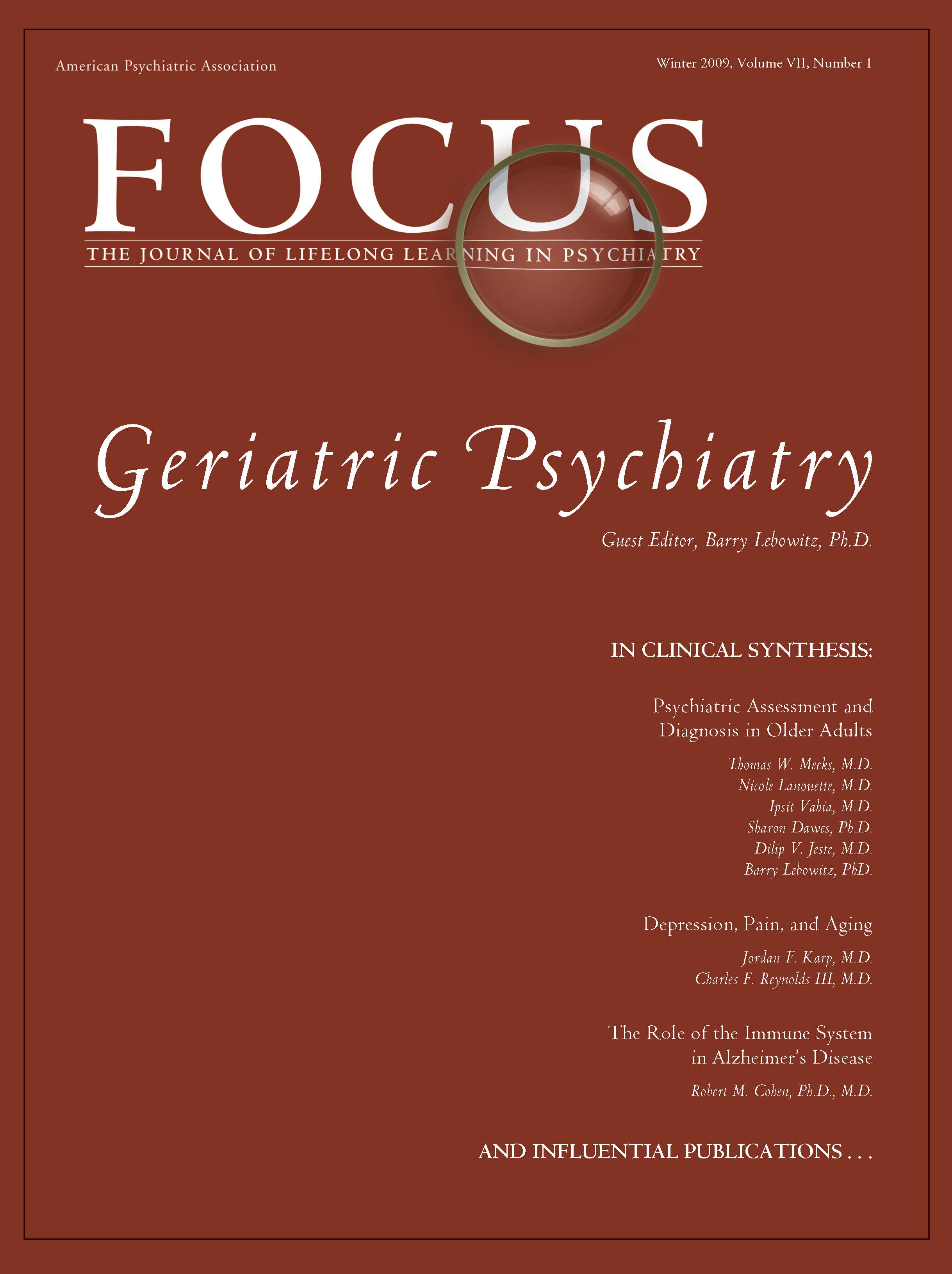Depression, Pain, and Aging
Abstract
The prevalence of persistent pain increases with age. Painful conditions such as fibromyalgia, chronic low back pain, osteoarthritis, and neuropathic pain are frequently comorbid with depression. When comorbid, these conditions slow the treatment of each other, worsen physical and psychological disability, and increase caregiving burden. Anatomic, neurochemical, and psychological similarities lead to high rates of comorbidity. Anxiety, disordered sleep, fatigue, and cognitive impairment are frequent “cotravelers” with depression and pain in late life; these conditions require vigilant screening and treatment. Psychiatrists should be familiar with current analgesic prescribing patterns and be able to effectively collaborate with primary care physicians and physical therapists to optimize treatment outcomes for patients with these complex problems. In this article we provide a review of the literature, an update on some of our own research in this area, and relevant clinical perspectives.



